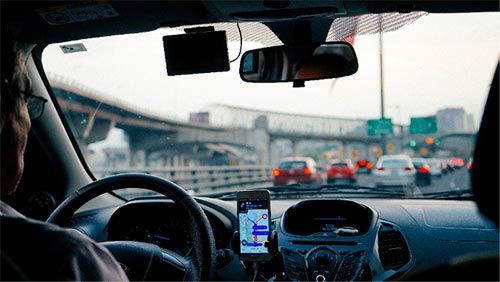The content on this page is informational only and does not take the place of medical advice or guidance. Please reach out to your healthcare team if you have questions or concerns about your diabetes management.

Diabetes and driving
For most people, driving is an essential part of daily life. In today’s world of rushing to your next doctor’s appointment, going to work or school, or ferrying kids, driving is how we get there. Like voting or going to college, driving is a privilege.
Can someone who has diabetes still drive?
That’s a common question after being diagnosed with type 1 or type 2 diabetes. The fact is, driving motor vehicles is generally safe for people with diabetes. However, sometimes symptoms and complications of diabetes, such as hypoglycemia, eyesight issues, or nerve damage (diabetic neuropathy), can impact one's ability to drive. People with diabetes should take extra precautions to help make sure they are safe behind the wheel.
Driving laws
State Licensing Rules
Each state has special licensing rules related to medical conditions, and some include diabetes. For example, in some states, drivers who have diabetes must get a signed form from their doctor confirming they can drive safely. It’s a good idea to become familiar with these rules to learn about which laws or policies apply. Licensing might require medical evaluations from a doctor, either before receiving your license.

Commercial Drivers
A separate set of rules, established by the Federal Motor Carrier Safety Administration, apply to those with diabetes who drive commercial vehicles. The rules were updated in 2018, and this FAQ from the American Diabetes Association outlines what this rule means for commercial drivers living with diabetes.
Hypoglycemia and driving: a hazardous mix
It’s vital to manage blood glucose levels, especially when operating a vehicle. Low blood glucose (hypoglycemia) can make it difficult to concentrate, or worse, may lead to passing out while driving.
Not only does hypoglycemia affect your cognitive ability, but also your motor skills. A low blood glucose can make you sluggish, unable to be alert and respond to unexpected traffic decisions behind the wheel.
Keep in mind that certain medications for managing diabetes can cause low blood glucose levels. A healthcare professional can advise which medications are likely to cause this risk. Drivers who take these medications should be careful to monitor their blood glucose levels prior to driving and along the route during longer driving sessions.
Tips for safer driving
Before driving
The following precautions before getting behind the wheel can help make driving safer:
- Take a blood glucose reading to make sure glucose is at least 80 mg/dL. If it’s lower, eat a snack and take another reading in 15 minutes.
- Place plenty of fast-acting carbohydrate snacks or glucose tablets within reach in the car.
- Bring a glucose meter to check levels as needed.
- Consider getting a continuous glucose monitor (CGM) that will check your blood sugar regularly throughout the day.
- Identify places like rest stops or restaurants along the route (using a smartphone, map, or from a home computer) to pull over in case your blood sugar dips.
- Pack snacks, such as nuts, sandwiches, cheese, or protein shakes, that have a combination of protein, fat, and carbohydrates to help keep blood glucose levels steady.
- Wear a medical ID bracelet or necklace so medical personnel will understand how to manage the situation in case of an accident.
Having your car stocked with easy-to-reach low treatments is always a good idea. Because your emergency snacks need to endure both extreme heat and cold if left in the car year-round, good options may be glucose tablets, candy, or jelly beans.
While driving
The following tips can help keep drivers and those around them safer on the road:
- Watch for signs of low blood glucose and be prepared to pull over somewhere safe to check levels if needed. Signs of low blood sugar include:
- Hunger
- Shakiness
- Sweating
- Sleepiness
- Confusion
- Headaches
- Vision problems
Don’t try to treat low blood glucose while driving. Pull over someplace safe first.
- Pull over and eat a fast-acting carbohydrate if levels are low, retest after 15 minutes, and do not continue driving until glucose levels are at least 80 mg/dL.
- Pull over someplace safe every hour or two on longer drives to check blood glucose levels —even with a continuous glucose meter (CGM), it’s important to look at levels to make sure it’s safe to continue driving.

We know managing diabetes can be an all-day, everyday challenge. If you need support, reach out to us. We’re here to help.
Looking for more tips? Join the list
Subscribe to our newsletter, News to Infuse, and receive monthly diabetes tips and helpful information.
